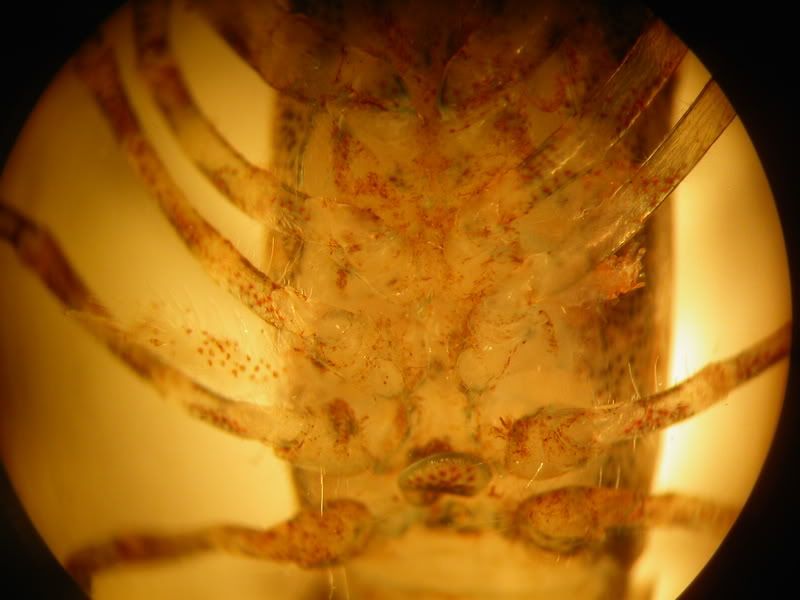Page 1 of 1
Difference/s in crayfish forms?
Posted: Thu Oct 26, 2006 9:37 pm
by ToddnBecka
I've searched the forum, and can't find the info. What is the difference between breeding and non-breeding forms? (Aside from the obvious, that they only breed in one form.)
Posted: Fri Oct 27, 2006 4:45 am
by YuccaPatrol
Cambaridae species undergo "cyclic dimorphism", meaning that they switch back and forth from a sexually mature breeding stage to a non-breeding stage.
In contrast, Astacidae remain in their breeding stage upon reaching sexual maturity.
Some general traits of a Form I male:
1) the chelae (claws) become elongated and enlarged
2) hooks appear at the base of the third and fourth sets of walking legs
3) the first two pairs of pleopods become hardened
For females, the annulus ventralis of the female hardens and becomes grooved
In general, a form I male will be a bit more robust in appearance.
Posted: Fri Oct 27, 2006 9:24 am
by ToddnBecka
1) the chelae (claws) become elongated and enlarged
I've seen pics of male Cambarellus that have larger claws than females, so I'm thinking they would be the breeding form. The male in my trio has small claws, doesn't look much different than the females overall. The females are also larger all around.
Is there a known trigger to stimulate development of the breeding form? From what I've read, mine are large/mature enough to breed, but I still haven't seen mating (understandable if the male isn't in proper form), or eggs. Would separating the sexes be a good way to encourage breeding?
Posted: Sat Nov 04, 2006 5:21 pm
by ToddnBecka
Do males in non-breeding form still have the extra smaller pair of legs?
Posted: Sat Nov 04, 2006 10:30 pm
by FISH WORLD ERIE
Yes they will have their gonopods or "extra set of legs". These crays are easy to sex. If you are having trouble try picking them up and look through a magnifier glass. No extra set of legs between their actual set means you have a girl cray.
Posted: Sun Nov 05, 2006 7:27 am
by YuccaPatrol
Females also have an "annulus ventralis" which is a bean shaped structure between their last set of walking legs.
Here is one of my photos showing the a.v. of a female Cambarellus diminutus. It is the spotted structure toward the bottom of the photo.

Posted: Sun Nov 05, 2006 10:38 am
by Cableguy
wow... what magnification is that at?
Posted: Sun Nov 05, 2006 12:30 pm
by YuccaPatrol
I didn't calculate the magnification, but this was taken using a "dissecting" microscope in our lab. I'll estimate approximately 50x magnification. The crayfish was less than an inch long.
Don't worry, no crays were harmed in the process.

Posted: Sun Nov 05, 2006 2:08 pm
by FISH WORLD ERIE
So what your saying is that it is 50x as hard to see it in person.

I have never noticed that but I guess I never looked for it either. Next time I roll one over I will look.
Jason
